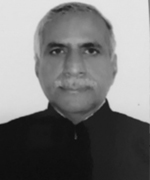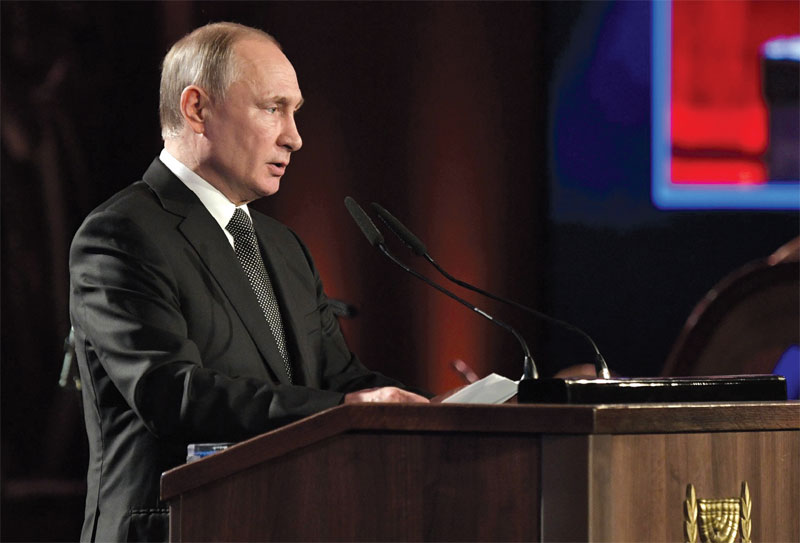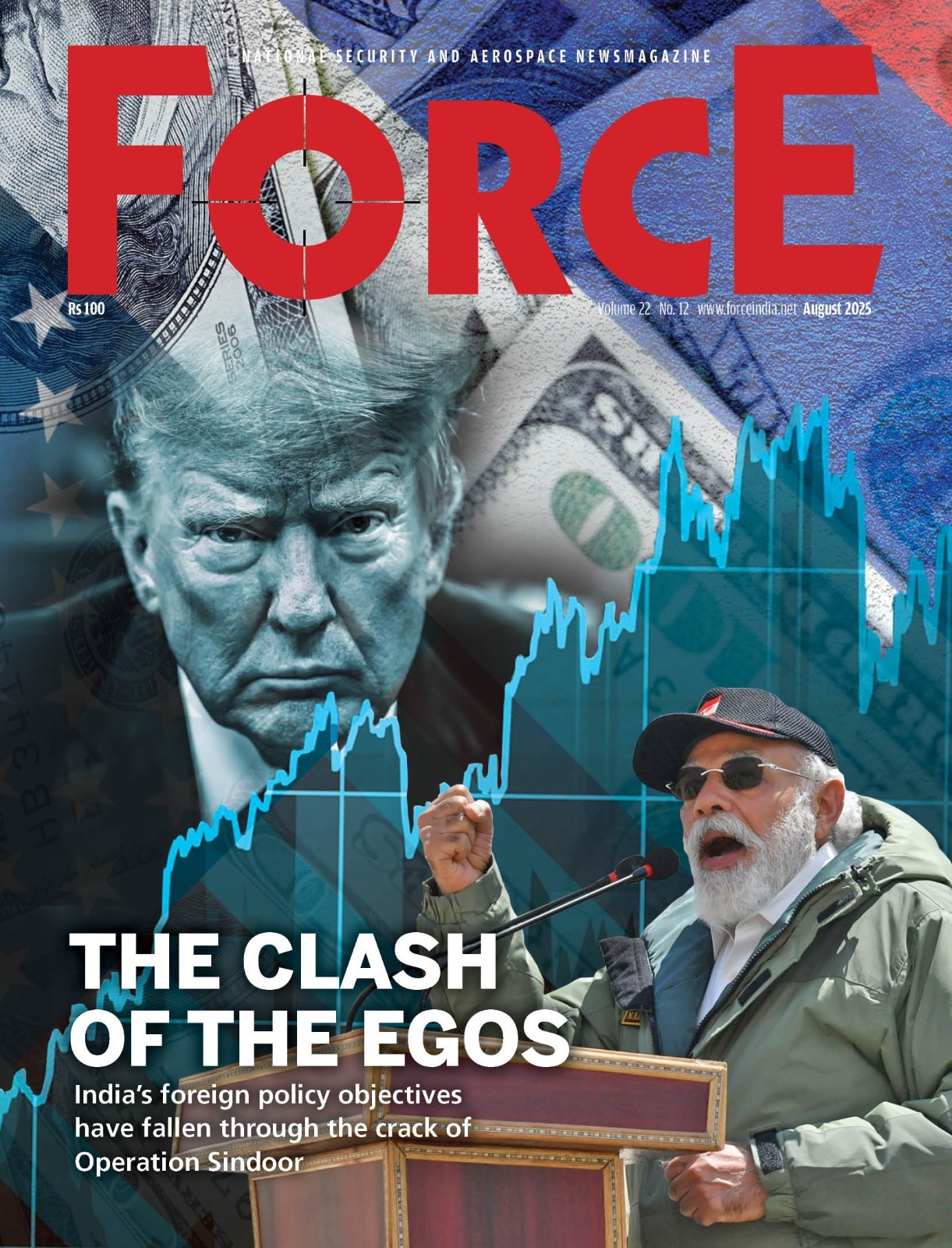Everything Under Heaven is in Utter Chaos
 Brig. Dinesh Mathur (retd)
Brig. Dinesh Mathur (retd)
The international order that existed after the collapse of the Soviet Union and the end of the Cold War heralded the emergence of a unipolar world with the operation of the Western Alliance sustained largely by the US (and Canada) military power and its nuclear deterrent. The smaller constituent of this alliance, comprising 10 other members of the united European Union (EU) combined the military forces of the allies in common structure, NATO based at Brussels. It took four decades for the US to achieve its avowed vision of dismantling an existential threat from the Soviet Union. As the Cold War receded, the American consensus believed that the main work of democratic transformation in countries still under authoritarian rule had been achieved and a peaceful world order would now unfold.
The geopolitical order in Europe was fundamentally transformed with the removal of this threat. One hoped for ‘a safer and a better world with a strong, healthy US, Europe, Russia, China and Japan, each balancing the other and not playing one against the other. The hackneyed themes of balance of power and equilibrium were to be replaced by the spread of shared ideals with the end of confrontation of two adversaries, to usher in economic prosperity and peace. Logically, both NATO and Warsaw Pacts had served their purpose and were redundant now. Yet the US and the West found it expedient to continue with the NATO in its war against terror, later in Afghanistan. The expansion of NATO (28 countries now) up to the borders of Russia, within 600 miles of Moscow and 100 miles from St Petersburg could not have been for extending the political reach alone.
Most newly independent and developing countries especially countries who have recently become sovereign nations after the dissolution of Yugoslavia and Soviet Union, aspiring for better quality of life did not fail to notice the open and tolerant societies, efficient consumer economy, superior health and education facilities, far better developed science, technology and infrastructure, even in the poorest of Western countries. They were the first to fall into this trap by joining EU and NATO, in their quest for the Western model of development.

At the Remembering the Holocaust Fighting Antisemitism forum in Jerusalem
Russia’s Grand Strategy as Perceived by US
The Russian grand strategy, as analysed by the Rand Corporation experts, is its ambition to restore its status as a superpower and to achieve its strategic goals by focus on Non-Contact Warfare confined to the immediate vicinity of its borders. Notwithstanding these, the US perceives Russia as nothing more than a regional power with no economic clout to wage a war. The focus on Non-Contact Warfare, also called Hybrid Warfare, is the strategy of attacking an adversary while remaining just below the threshold of conventional war. The only way China and Russia can challenge the US military might is by the use of its hard and soft power in the ‘grey zone’. The possible spectrum could be, cyber-attacks on the adversary’s critical infrastructure, posing/ deploying threats to space assets, information operations to spark domestic violence and forcible acquisition of areas where there is ethnic commonality or disaffected population.
Of late, US is also aware that Russia has steadily and rapidly expanded its military capabilities with the intention of neutralising US capabilities of projecting power inside its spheres of influence. Its strategic interests still lie in its former Soviet Republics, the unhindered freedom of its Baltic Fleet, the North Sea Fleet, the Black Sea Fleet, the North Pacific Fleet and the defence of the Arctic Circle. US feels that Russia has joined the Great Game for the control of Arctic Circle. Russia has already hoisted its flag at the North Pole and has deployed series of fortified positions all along the Arctic Circle. The area is patrolled by its nuclear attack and ballistic submarines. Since its intervention in Syria, in 2015, Russia has re-opened its naval base at Tartus for operations of its Kilo Class submarines. All these Russian moves need to be kept under surveillance.
Russian Perception of its National Interests
Russian Federation’s primary national interests hinge on ensuring its sovereignty and territorial integrity and security on its external borders. Russia is particularly sensitive to military conflicts within Russia Federation, demographic and economic expansion into Russia and isolation of Russia by military blocks in the vicinity of its borders. Other pillars on which its national interests rest are as follows:
- Strengthening of military-political blocs and alliances, promote full integration of republics within Russian Federation as a counter to NATO's eastward expansion. Russia perceives NATO’s strategic doctrine as hostile to its interests and could destabilise the region.
- Monitor closely the growth of regional powers such as Germany and France with enhanced weapons technology and military equipment. They could replace Russia as arms suppliers’ and cause economic losses and render Russia’s equipment obsolete.
- Take measures to prevent weakening of Russia’s political, economic, and military influence in the world and restore its erstwhile superpower status.
- Oppose establishment of NATO military bases/ presence in Ukraine, five Central Asian and three Caucasus Republics which are in the immediate proximity of Russian borders.
- Prevent outbreak/ escalation of conflicts in immediate vicinity of Russian Federation especially where ethnic Russian population is threatened.
- Reject any future territorial claims on Russian territory after the recently concluded border settlement with China.
- Prevent UN/ UN sponsored agencies, US and EU from meddling in affairs of member Russian Federation States.
- Prevent proliferation of mass destruction weapons and their delivery vehicles within its boundaries.
- Take measures against cyber warfare, control vulnerability to hacking and other forms of intrusions of all information, telecommunications data storage systems.
Subscribe To Force
Fuel Fearless Journalism with Your Yearly Subscription
SUBSCRIBE NOW
We don’t tell you how to do your job…
But we put the environment in which you do your job in perspective, so that when you step out you do so with the complete picture.








